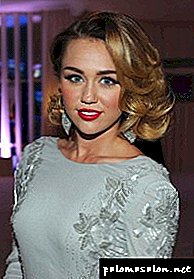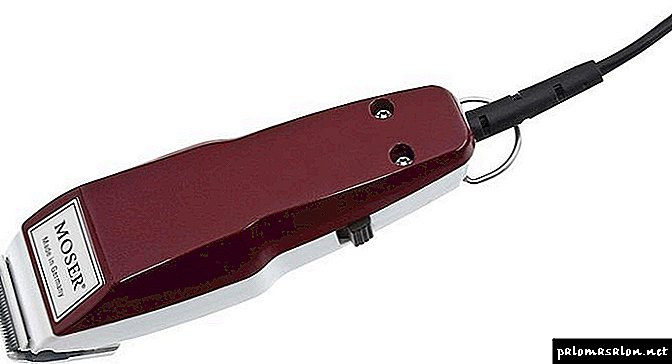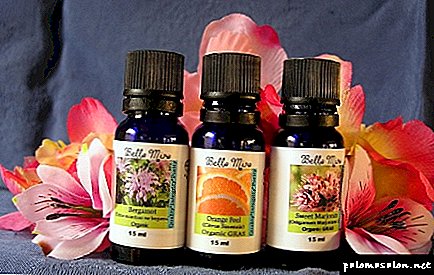Lice are small blood-sucking insects that parasitize on the scalp. Parasitic lice infestation is called pediculosis. The disease causes not only severe discomfort due to painful bites and itching, but is a source of typhus and relapsing fever, which are dangerous to health.  Hydrogen peroxide kills lice and nits. If you have such a problem and are wondering if hydrogen peroxide can kill lice, the answer is definitely positive. 3% hydrogen peroxide is used for the external treatment of wounds, abrasions and damage to the dermis. It releases oxygen, forms a foam, and helps the wound to be cleansed of contamination, necrotic cells and microbes. In addition, peroxide oxidizes the surface of the skin and, if at this time there are lice, eats away the integuments of insects. The solution in a few minutes penetrates inside and destroys the insides of the parasite. The most resistant remain alive, but can not multiply and lead a full life.
Hydrogen peroxide kills lice and nits. If you have such a problem and are wondering if hydrogen peroxide can kill lice, the answer is definitely positive. 3% hydrogen peroxide is used for the external treatment of wounds, abrasions and damage to the dermis. It releases oxygen, forms a foam, and helps the wound to be cleansed of contamination, necrotic cells and microbes. In addition, peroxide oxidizes the surface of the skin and, if at this time there are lice, eats away the integuments of insects. The solution in a few minutes penetrates inside and destroys the insides of the parasite. The most resistant remain alive, but can not multiply and lead a full life.
In the fight against pediculosis, it is important to destroy not only adult individuals, but also their eggs. Nits are attached to the base of the hair with the help of a special glue-secret and their shell can not be dissolved by peroxide. However, peroxide in this case does not destroy the nits themselves, but the structure of the glue, so you should not worry if peroxide from lice and nits helps. Eggs just fall off from the hair.
How to use hydrogen peroxide against lice
To get rid of hydrogen peroxide from lice and nits, the method of use must be careful and with strict observance of instructions. Take peroxide only in diluted form, otherwise you will get skin burns.
The effectiveness of the method, how to remove lice with hydrogen peroxide at home, depends on the degree of infection and hair length:
- With a slight infection, short or medium hair length and thorough combing out lice disappear after 1 procedure.
- If you have a strong infection, long hair or after 14 days you have discovered new bites and live specimens, repeat the treatment. It does not make sense to use peroxide against head lice a second time before this period. Nits turn into full-bodied lice only after 10-14 days.
Since there is always a chance of an allergic reaction, before you apply peroxide against lice, check the tool for individual sensitivity. Apply 2-3 drops of peroxide to the ear or to the crook of the elbow and wait 5 minutes. A slight burning sensation on the skin is considered normal. If the skin turns red, swollen, tingling and discomfort has appeared, this method does not suit you.
The recipe for hydrogen peroxide against lice includes a 3% solution. You will also need a sponge and plastic bag. A peroxide concentration of 1.5% is considered safe, so dilute the product with water in a 1: 2 ratio. Prepare the solution before use, as the peroxide loses its properties upon contact with oxygen.
How to get rid of lice with hydrogen peroxide:
- Well comb the curls and divide them into strands.
- Dip a sponge in peroxide and apply the solution over the entire length of the hair.
- Move from the roots to the ends of the strands.
- Keep track of time. The slower you apply the product, the longer it acts on the skin and causes irritation.
- The maximum application duration is 5 minutes.
- Try not to get a solution on the mucous membrane of the nose and eyes.
- Put a plastic bag on your hair and fix it with a cling film to cut off oxygen to the parasites and increase the effect of the composition.
- After 7–9 minutes, wash your hair with warm water.
- If in the process of waiting you feel a strong burning sensation, do not tolerate and wash off the hydrogen peroxide before.
To preserve the shine and health of the hair after the action of hydrogen peroxide, add lice treatment to the treatment with lice. Add to 1 liter of water 1 tsp. citric acid and rinse well curls.
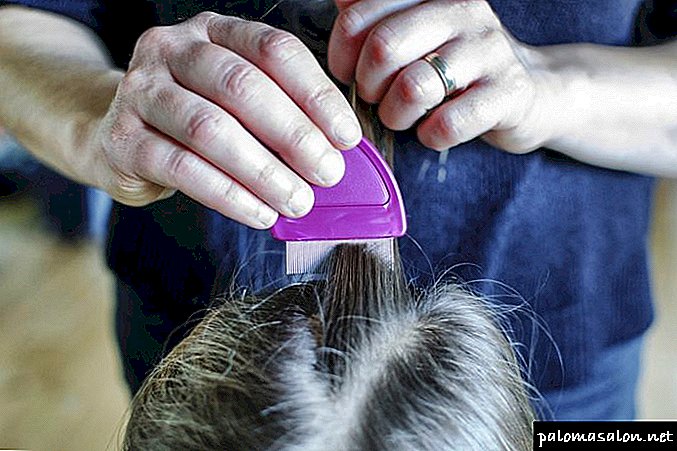 After the procedure it is necessary to carefully comb the hair. The next stage of removing lice and nits with hydrogen peroxide is combing. Not all insects can be washed with water and lemon rinse. Not to mention the living nits, from which new lice can later hatch.
After the procedure it is necessary to carefully comb the hair. The next stage of removing lice and nits with hydrogen peroxide is combing. Not all insects can be washed with water and lemon rinse. Not to mention the living nits, from which new lice can later hatch.
How to get rid of nits and dead lice by combing:
- Use a comb with frequent metal teeth.
- Dry your hair after rinsing.
- Spread paper or white cloth under the curls.
- Comb your hair in thin strands 2-3 times a day for 10-14 days.
- Try to keep new strands from mixing with already processed ones.
- If you miss at least one live nits, the lice population will be reborn.
- The total duration of combing is at least 30 minutes.
After the procedure, take a magnifying glass or magnifying glass and inspect the scalp and hair for nits, remnants of dead or weakened insects.
You can also find out how to use hydrogen peroxide from papillomas and age spots.
Contraindications and possible harm
Before using the agent for the treatment of pediculosis, study the contraindications for hydrogen peroxide from lice and nits, method of application, reviews. For example, peroxide cannot be used if there are wounds and scratches on the skin. It leaves scars and scars on the damaged dermis.
Peroxide from lice to children under 5 years old is not recommended, as it can harm the delicate skin of a child. Be careful with hair treatment during pregnancy. This tool may adversely affect the development of the fetus.
Peroxide significantly highlights the hair and weakens them. If you are going to remove lice with hydrogen peroxide, be prepared that the curls will be brightened by at least 1 tone. If the curls are initially in poor condition, you can provoke the appearance of split ends, brittleness and even loss.
For details on how to get rid of lice, see the video:
Hydrogen peroxide against lice and nits - reviews
Due to the availability, safety and high performance of hydrogen peroxide from lice and nits, the feedback on this tool is often positive.
Anastasia, 38 years old
I was faced with a lice problem when I became an adult. At first she was confused, but thanks to the advice of her friends she quickly pulled herself together and got rid of the parasites. At the same time, I changed the image, how long I had dreamed))) It was in itself fair-haired by nature, I lightened my hair with peroxide by one tone and got the perfect shade. As for the lice, there were a few of them, and the peroxide really killed everyone. Combed out for a long time.
Used peroxide from lice in her daughter. She is 13 years old, picked up, I think, in the pool. The method turned out to be effective. Hydrogen peroxide has always been in my house and suddenly came in handy not only for processing scratches. Not to say that the procedure is pleasant. A little tweaked, but quite tolerable. After processing, 45 minutes combed her daughter's hair with a fine comb, and then several more times a day. She was afraid that the nits did not die, so she made another treatment after 14 days. Lice was no longer! I recommend unequivocally. Only the hair is really a little lighter, so brown-haired women and brunettes be careful.
What to remember
- Hydrogen peroxide destroys the shell of adult lice and their insides, and also dissolves the glue that holds the nits, and facilitates combing.
- Use diluted hydrogen peroxide for treatment.
- Apply the solution quickly, within 5 minutes.
- Wash off after 7−9 minutes after processing.
- Rinse hair with lemon solution to prevent brittleness.
- Carefully comb out curls for 30 minutes from dead lice and live nits.
Please support the project - tell about us
How does hydrogen peroxide act on lice?
Hydrogen peroxide is used for various medical purposes primarily as a chemically active substance, which, due to its strong oxidizing properties, leads to the decomposition of complex organic molecules and biological structures.

For example, hydrogen peroxide is very effective at killing bacteria, viruses, and fungi, which ensures reliable disinfection during the treatment of wounds. When peroxide is poured into deep and festering ulcers and boils, it promotes the separation of pus and necrotic areas from healthy tissues, thereby helping to avoid the development of gangrene and aggravation of the patient's condition.

Hydrogen peroxide is also very active in lice - it damages the integuments of the insect and literally burns out the internal tissues when it enters the respiratory tract (spiracle). Although distantly, nevertheless, acetic acid acts in a more or less high concentration in a similar way on lice.
Hydrogen peroxide is also effective against nits: the protective shell of the egg itself is intact, but the peroxide destroys the secret with which the nit is attached to the hair. After this treatment, the nits are much easier to comb out from the hair with a comb and even partially crush themselves.

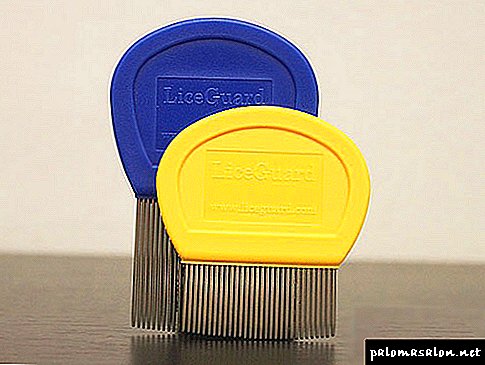
Almost always after treatment with peroxide hairs, lice surviving on them remain, not dead, but severely injured and not capable of further feeding, crawling and reproduction. Therefore, before removing lice with hydrogen peroxide, a thick comb should be prepared in advance (it is better to use special lice combs), by which such weakened individuals can be easily combed out after treatment of the hair.
Peroxide application rules
If you decide to use peroxide against lice, it should be used in a less concentrated form than it is sold in pharmacies. To do this, before you get rid of lice with hydrogen peroxide, the tool itself should be diluted with water at least twice (from 3% to 1.5%). If you do not do this, you risk skin burns.


Immediately you should be prepared for the fact that even with short-term use of peroxide, the hair will change color and become lighter. And even a random delay can completely discolor them.
Important!
In no case should not be confused with the usual 3% hydrogen peroxide solution, which is sold in pharmacies and 30% solution, which can also be found in pharmacies (usually sold in cans), but which is incomparably more dangerous to handle. 30% peroxide is extremely aggressive and dangerous to health!
Remove lice and nits with hydrogen peroxide should be in this sequence (we are talking about a 1.5% solution, which is obtained by diluting the pharmacy 3% twice):
- The skin is tested for sensitivity to the solution: a few drops are spread on the skin behind the ear or on the elbow bend and left for a few minutes, then washed off with water. If at the site of application there are no red spots left, you can proceed. Redness or itching - clear signals that the skin is easily burned with peroxide and when applied to the whole head you can get an extensive chemical burn. If such reddening from one drop appeared, the peroxide cannot be used.

- The second stage - the peroxide is applied to the head with a sponge, while the hair is divided into strands and moistened with a solution along the entire length. The solution should be wet and the skin under the hair. The whole procedure should be carried out quickly enough, because it is possible that in the places treated first, there will be a sharp pain and irritation, requiring rinsing of the solution, and part of the hair will not be processed yet. When processing, avoid contact with eyes.
- After 7-10 minutes, the head is rinsed with soap and water, you can sprinkle it with citric acid and rinse again.
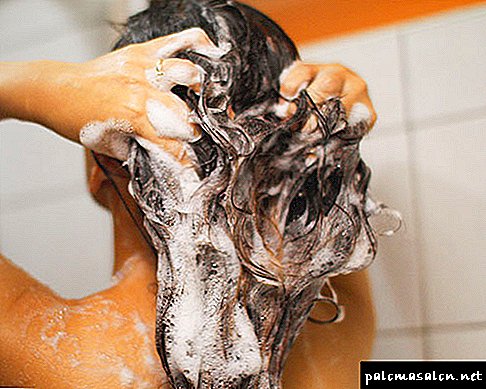
- At the end of the procedure, wet hair should be carefully combed with a special comb for lice.

Considering the fact that when bleaching and repainting hair, peroxide is usually applied for 20-25 minutes, this procedure also turns out to be detrimental to lice. Therefore, many women prefer to combine business with pleasure, and use hair dye to remove parasites.
“I decided - go to the salon, my hair will discolor, dye, and I will be without lice in a new color. But in the cabin they saw that in my head, they made a scandal. So it was a shame, I felt bomzhihy. Lice poisoned the house Nix ... "
However, it should be noted that with a serious infection, even hair dyeing with their prior discoloration with peroxide is not always a guarantee for the destruction of all lice. Therefore, it is better to divide these procedures - first remove the lice, and then repaint the hair.
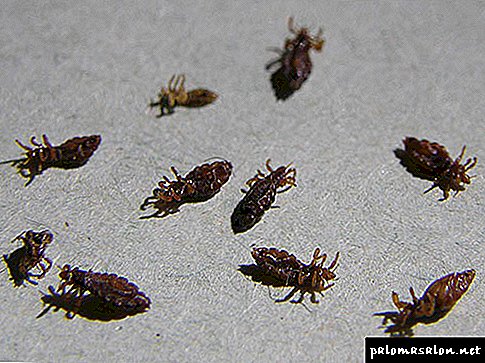
The degree of hair lightening when applying hydrogen peroxide depends on the concentration of the substance and the time it is held on the head. For 7-8 minutes of exposure to a 1.5% solution, the color of the hair practically does not fade.
“Grandma told me that peroxide is good for lice.” I know that it is also used for bleaching hair. Why not do it all at once? I bought myself a paint, peroxide, called a friend, we sat down, smeared it with peroxide, waited until the pinnacle began, washed off - and a lot of lice floated to the bathroom. Probably, some remained on the hair, but also dead. Painted, and all - no lice, brown hair there. "
Safety is paramount: how not to get a chemical burn instead of lice?
Be sure to remember that hydrogen peroxide is a very aggressive substance. In some cases, the consequences of its use are more serious than the problems caused by lice.

If peroxide doesn’t want to be replaced with safer products, in order to avoid side effects, it is necessary to observe several rules when applying lice and nits:
- Be sure to check the sensitivity of the skin before each use of the product (even if you are not allergic to peroxide, you suddenly diluted it incorrectly and it is too concentrated).
- Do not keep peroxide on the head, if there was a burning and tingling sensation.
- Do not repeat the procedure "to consolidate the effect" or prevention - this is a serious stress of the skin and hair.
Do not use peroxide from lice for children and adolescents. Their skin can react to this drug completely unpredictable. Peroxide should also not be used if there are wounds, irritations, rashes of any nature on the head. After peroxide treatment, the healing of such damage can occur with the formation of scars and scars.
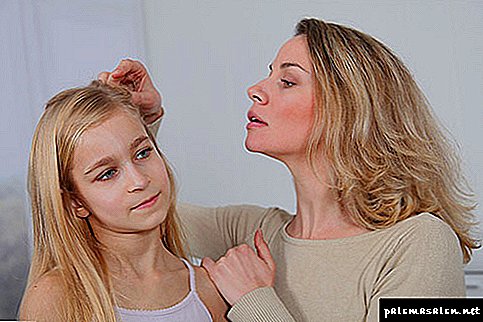
“The first time poisoning lice peroxide. I didn’t do more of such nonsense - it’s good that I hounded myself. Her hair turned white, broke, there were burns behind the ears and on the back of her head, although she seemed to be doing everything according to the instructions. She survived somehow, a year later she had to poison herself and her daughter. I bought Pedilin shampoo, washed my head once - and no irritation, no parasites. ”
Alternatives to hydrogen peroxide: when is it better to prefer special drugs
Lice drugs that give fast and reliable results on the market today are a lot:
- lice shampoos - Pedilin, Parazidoz, Lays-Gard
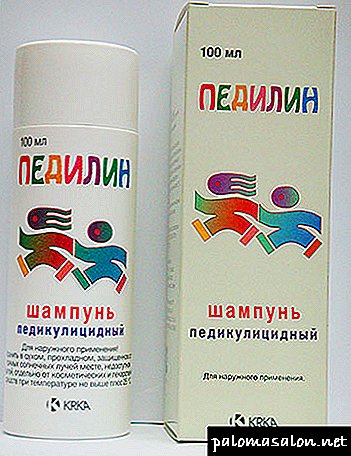
- emulsions and concentrates for their preparation - Medilis, Medifox, Avicin
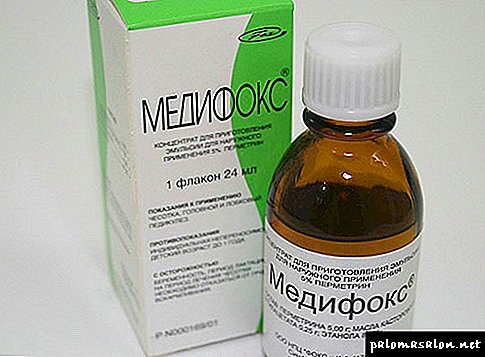
- sprays - Pedikulen, Nuda, Paranit
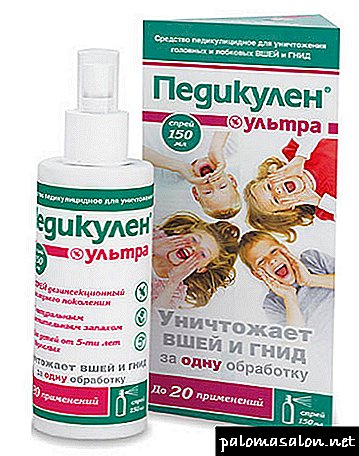
- creams - Knicks, Nittifor.

To combat lice in children, as well as with a particular weakness of the hair, it is definitely necessary to prefer these products.
Each of the above drugs has its own contraindications, but they are all safer and easier to use than hydrogen peroxide. Their only disadvantage in front of this folk remedy is the cost, but for the sake of health and safety (especially when it comes to children) it is not worth saving in cases of lice infestation.
How to remove lice with hydrogen peroxide
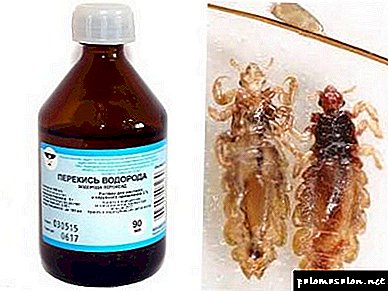 You can apply only diluted to 1.5% concentration solution. To get it, add exactly the same amount of water to hydrogen peroxide.
You can apply only diluted to 1.5% concentration solution. To get it, add exactly the same amount of water to hydrogen peroxide.- First you need test for allergies and skin sensitivity. To do this, prepare 1 teaspoon of a 1.5% solution and put it on a cotton pad on the bend of the elbow and the skin behind the ear. Wait 10-15 minutes and rinse with water. If the skin does not turn red, there is no itching, you can use hydrogen peroxide to remove lice. If there is redness or the skin is itchy, this method does not suit you.. Ignore the results of the skin sensitivity test can not, because you can get a serious chemical burn.
- If there are no reactions on the skin, a large volume of 1.5% solution is prepared.. It is applied to the scalp and hair with a sponge. It is important to wet the strands very well, without missing them. Also the solution is treated with the upper part of the neck under the hair.
- Do it quickly, as the first treated skin can start to burn. It is difficult to apply the solution yourself it’s better for another person to do this.
- Do not allow peroxide in the eyes.. If this happens, rinse thoroughly with water.
- The solution is kept on the hair for 7-10 minutes. In no case should time be exceeded, otherwise a chemical burn will result, and the hair will begin to discolor strongly.
- After the solution is washed with household soap or tar soap.
 Then hair rinsed with water with lemon juice or a tablespoon of vinegar added to itto neutralize the remnants of soap.
Then hair rinsed with water with lemon juice or a tablespoon of vinegar added to itto neutralize the remnants of soap.- For women with long hair after that is necessary apply balm for easier combing for 3-5 minutes, as they will have to be scratched for a long time.
- Hair is a little dry and begin to comb still wet. For this you need a comb with very rare teeth (you can take a male one) or buy a special comb at the pharmacy for combing nits and lice. Hair comb at least 30 minutes. It depends on whether the eggs of insects that are no longer attached to the hair will be removed. Also careful scratching removes all dead lice.
It would seem that an adult can not get sick pediculosis, but somewhere I managed to catch lice. I thought that it was the scalp that was itchy from the new shampoo, but when I combed it in several places before the blood, I suspected something was wrong. I asked my mother to examine the scalp, and she found lice. Mom immediately advised to try to remove them with vinegar, but I was afraid. I read about the method with hydrogen peroxide. I did everything according to the instructions, but I combed out my hair not only after washing, but also for two days. I really wanted to comb out all the nits, so as not to have to repeat the procedure. Everything turned out, got rid of lice at a time!
Deduced lice 15-year-old daughter. She was very afraid that she would strongly pinch the scalp, but everything was very tolerant. Her hair is light blond, even such a brief exposure to the peroxide was enough for them to lighten slightly, but the daughter was delighted with this effect. Adults lice from this procedure died immediately, and I combed out nits from my daughter's hair for an hour with a fine comb.
A 10-year-old son has lice. They decided to shave off the hair and get rid of the problem in one fell swoop, but he said that it would be better to have lice than bald. Grandma remembered this method with hydrogen peroxide. It helped from the first time. With short hair, the remaining nits combed out very quickly. But we did not test the sensitivity of the skin before that, but in vain. In several places on the head small burns were formed.
About hydrogen peroxide
This remedy was first developed by the French chemist L. Zh. Tenard in 1818. The resulting substance is a transparent non-flammable liquid, a very strong oxidizing agent. They began to use it as an antiseptic, brightener, oxidizer, and for the production of oxygen (hydrogen peroxide formula - H2O2).

Hydrogen Peroxide Formula
In medicine, the tool was used for disinfecting, treating the premises and obtaining disinfectants. Later, thanks to the developments of Professor I. P. Neumyvakin, it became clear that in the treatment of many diseases it was necessary to use not a “pure” peroxide, but its aqueous solution. The scientist came to these conclusions by testing the remedy for himself. As a result of research, there are 3 ways to apply peroxide now:
- outdoor (the easiest and fastest way),
- internal (only on an empty stomach, taken incrementally, but not more than 30 drops per day),
- intravenous (the procedure should only doctor!).
Recently, in medicine, peroxide is used to treat many diseases, including serious ones:
- wounds, boils, ulcers, scratches,
- angina,
- pneumonia, bronchitis,
- diphtheria,
- sinusitis,
- phlebeurysm,
- caries, periodontal disease, toothache, bleeding gums,
- osteochondrosis,
- initial skin cancer
- nosebleeds, etc.
Given the wide scope of the solution and the cost of hydrogen peroxide (from 10 to 50 rubles depending on the number of milliliters in the bottle), this tool is really a good option for solving many problems.

As for the contraindications - there are practically none. All that can be denoted - children and adolescents, wounds and rashes on the scalp (when dealing with lice) and an allergy to hydrogen peroxide. However, according to Neumyvakin himself, the likelihood of individual intolerance is too low - only in 1-2% of cases of application.

In addition to all the diseases listed, it is believed that with the help of peroxide, pediculosis can be overcome using both the medication purchased at the pharmacy and hair dye containing this solution. But does it really give a 100% result and is hydrogen peroxide harmful to hair?
How does lice act
The effect of peroxide on these parasites is similar to the effects on them of vodka, kerosene or vinegar. Getting on the insect, the solution almost immediately begins to corrode its shell, and after that - the internal organs. When peroxide vapor is inhaled, the airway of the bloodsucker is burned. Both adults and their larvae are affected.
On nits, applying the solution has a slightly different effect, different from how hydrogen peroxide acts on lice.
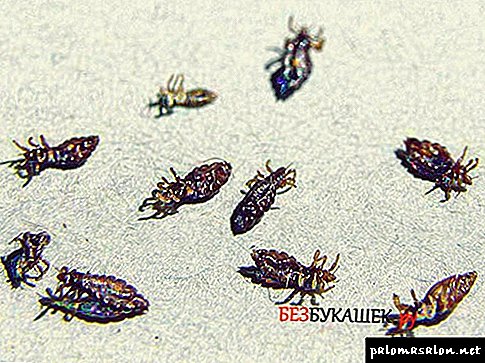
Dead lice from the action of hydrogen peroxide
As is known, the female louse attaches eggs (nits) to the hair due to the adhesive composition, after which it is very difficult to comb or remove such clutches by hand. Peroxide is capable of dissolving this sticky secret, but the protective shell in which each egg is enclosed cannot be burned through. Thus, all that can be done after applying the solution is to try to maximally comb the nits out of the head with a special frequent comb. Most of them will undoubtedly be removed, but not the fact that it will be possible to get rid of absolutely all the eggs, especially with a very thick head of hair. The remaining nits in the head will certainly ripen, and the problem with lice will start anew. It turns out that this method cannot guarantee a 100% result.
Dyeing hair with paint, which contains peroxide, can give about the same incomplete effect, so many people believe that for the absolute destruction of lice, the painting procedure should be repeated. But how harmless is hydrogen peroxide etching for hair and scalp?
About security
According to most experts, it is quite risky to use hydrogen peroxide from lice and nits on the head (and even more so on the pubis!). The solution is very dangerous for lice, but if used incorrectly, the person also risks acquiring a lot of unpleasant consequences from this method of controlling parasites.

Safety is everyone's business!
One should not forget that peroxide is a complex chemical substance leading to the breakdown of biostructures. Therefore, the use of means to avoid consequences should be carried out in compliance with the rules.
Violation of the rules is fraught with the following consequences:
- you can get burned by hydrogen peroxide,
- the solution lightens hair a bit,
- hair starts to fall out, break,
These are the very reasons why hydrogen peroxide against lice cannot be considered an absolutely safe option. However, if the situation is such that there are lice, and there are no special tools at hand at the right time, you can resort to at least this method, but by strictly following the rules of application and without much hope for a 100% result from the first time.
Application tips
To remove the lice with hydrogen peroxide, you first need to prepare a special comb for combing bloodsuckers and their nits, a sponge for wetting the hair, a diluted solution. In the pharmacy, it is sold, as a rule, 3%, but it cannot be used in such concentration. How to dilute hydrogen peroxide: you just need to dilute it with water 1: 1, getting the concentration twice less.

Hydrogen peroxide and lice comb
Next, a test should be carried out on the tolerance of the substance: apply a little diluted product to the sensitive area of the skin (behind the lobe of the ear, wrist, inner elbow bend, etc.) and wait 10-15 minutes. If there is no redness and irritation, you can safely use it, if you have one, you will have to look for another way to combat lice. Next - perform the steps step by step:
- brush hair,
- moisten the strands with a sponge moistened in the solution until all the hair has been processed (wet the skin at the base of each strand as well),
- after 7-8 minutes, rinse with warm water and soap (during this time the hair will not have time to lighten),
- immediately from wet hair carefully comb all dead lice and nits with a comb,
- rinse the head with shampoo (preferably with a special) and dry without a towel.
After washing your hair with soap and water, it is helpful to sprinkle hair with citric acid and wash everything again.
The use of hydrogen peroxide is a real test for skin and hair, so repeating the procedure earlier than 2 weeks is highly undesirable. The same applies to those who use hair dye instead of the solution itself, because everyone knows how frequent hair coloring affects hair.
In the fight against lice, everyone decides for himself what means to use - special or popular. Despite the many positive reviews of hydrogen peroxide, it should be remembered that the use of the solution is not an absolute guarantee of complete and instant disposal of these parasites.
Can I get rid of lice and nits with hydrogen peroxide?
A louse is a parasitic insect that lives only on the hair part of the human body and feeds on its blood.
The adult has a small size (0.4 mm), three pairs of tenacious legs and is covered with chitinous shell.
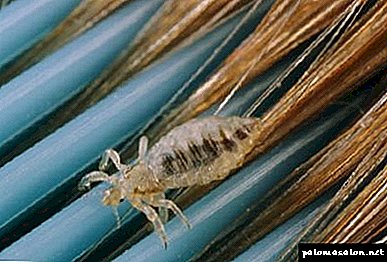 When the peroxide gets on the shell, it is instantly destroyed, the louse can die either from the direct exposure to the substance, or poisoned by the peroxide vapor.
When the peroxide gets on the shell, it is instantly destroyed, the louse can die either from the direct exposure to the substance, or poisoned by the peroxide vapor.
Hydrogen peroxide has a pungent and peculiar smell, inhaling vapors of this toxic substance, the louse burns the internal organs of respiration and dies within a few minutes.
Nits are the offspring of lice. An adult individual, falling on the head of a person, immediately starts laying aside nits; it is able to lay 5-6 cocoons with larvae per day. Each nit is attached to the hairline as close as possible to the scalp (2-3 cm from the roots of the hair).
The maturation period from the moment of laying eggs to the release of the larva from the cocoon lasts 5-7 days under favorable environmental conditions.
Since the nits are protected by a very durable cocoon, even such an aggressive substance as peroxide cannot penetrate inside the cocoon and destroy the larva in the bud. Therefore, peroxide is safe for the larvae itself. But hydrogen peroxide perfectly eats away the sticky secret, with which the nit is fixed on the hair, after which the nit can be easily removed.
The advantages and disadvantages of this tool
Any method of traditional medicine, aimed at getting rid of lice and nits, should first be tested for sensitivity of the skin, otherwise the consequences can be very deplorable. After all, to correctly calculate the dosage of the active substance independently at home is not as easy as it may seem at first glance.
Advantages:
- affordable price. Peroxide is a budget tool available to all segments of the population. Its cost is much lower than specialized products designed specifically for the destruction of lice and nits.
- Fast and effective action. Get a tangible result in the fight against lice, you can already immediately after the first use of peroxide. Living individuals die instantly, and nits are easily removed from the hair.
- Ease of use. Prepare a solution for the treatment of the head, you can independently at home. This process does not take much time and does not require special knowledge and skills.
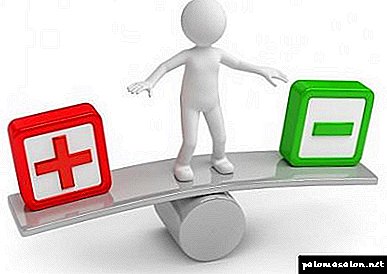 Disadvantages:
Disadvantages:
- side effects. Since peroxide is a very aggressive chemical, it has a negative effect not only on insects, but also on human health. At the wrong concentration of the solution, the use of peroxide can provoke:
- chemical burn of the scalp,
- drying and flaking of the scalp,
- partial hair loss
- destruction of hair follicles,
- scarring of the tissues in the places of injury (if there are scratches and wounds, scars may remain after peroxide treatment),
- hair discoloration.
Therefore, re-treatment of the scalp and hair with a special preparation or peroxide solution is required. Since it is recommended to repeat the treatment no later than 5-7 days after the first, even a completely healthy scalp will not withstand such a chemical attack, the side effects will be inevitable in full.
Signs of a chemical burn of the scalp with hydrogen peroxide:
- discoloration of the scalp. Skin whitening or severe redness may occur.
- Edema. After a chemical burn for half an hour, a visually noticeable swelling of the scalp appears.
- Blistering. With a strong chemical burn, blisters of various sizes appear instantly. After healing, scars and scars form in their place, the hair in these places falls out and no longer grows, as the hair follicles are damaged or completely destroyed.
Detailed instructions for use
 Peroxide is not the safest way to get rid of lice and nits, it is not recommended to use it for children and adolescents.
Peroxide is not the safest way to get rid of lice and nits, it is not recommended to use it for children and adolescents.
Training:
- buy in a pharmacy a solution of hydrogen peroxide 1 or 2 bottles, depending on the length of the hair. Be sure to see the date of manufacture, the drug should not be overdue.
- Prepare a container for the solution.
- Pour the peroxide vial into the container and dilute it with water in a 1: 2 ratio. That is, add two cups of pure water at room temperature to a cup of peroxide.
- With the help of ready-made solution to conduct a skin sensitivity test. If the test gave a positive result (redness and itching appeared), it is absolutely impossible to apply the peroxide solution. If the test gave a negative result (no external manifestations of allergy have appeared), you can proceed to the treatment of the head.
Head and hair treatment:
- The peroxide solution is applied with a sponge to the scalp and the entire length of the hair. This should be done very quickly.
- First, the occipital and temporal zones of the head are processed, then the crown and bangs.
- When applying the solution, the whole head of hair is divided into small strands, each strand is processed from both sides very carefully, until it is completely wet.
- After processing, you can wear a plastic hat, tightly wrap your head with a bag or film is undesirable.
- The solution should be kept on the head no more than 6-9 minutes, it all depends on personal feelings.A slight, tolerable burning of the scalp is a normal reaction. If the burning sensation is very strong, rinse the solution immediately, so as not to bring the situation to a chemical burn.
Flushing solution:
- rinsing the solution from the hair is done with a shampoo and a large amount of water.
- For rinsing is best to take the juice of one lemon per liter of warm water.
After the peroxide is washed from the hair, you need to rinse your head with water and lemon.
Treatment effectiveness
 After the first treatment of the head with the means prepared according to the above recipe, 95% of all living individuals die, but even the surviving single insects get the most severe poisoning, after which they cannot reproduce.
After the first treatment of the head with the means prepared according to the above recipe, 95% of all living individuals die, but even the surviving single insects get the most severe poisoning, after which they cannot reproduce.
Danger represent nits. Most nits are washed out with water immediately after treatment of the head. The rest must be carefully combed for 5-7 days daily. If at least one larva survives, the lice will flare up with a new force.
To prevent self-infection, all experts recommend treating the head at least 2-3 times with a break of 3-5 days. In the case of hydrogen peroxide, this is totally unacceptable option, otherwise side effects can not be avoided.
Safety and Contraindications
Treatment of the head with hydrogen peroxide is absolutely not suitable:
- children and teenagers
- To old people,
- in the presence of individual intolerance to the solution,
- in the presence of wounds, scratches and irritation of the scalp,
- in the presence of diseases of the upper respiratory tract (bronchitis, asthma, and so on).
Hydrogen peroxide is very dangerous for the mucous membranes; if a substance enters the eye, a burn can lead to loss of vision. Therefore, it is necessary to very carefully apply the solution, avoiding spreading over the face.
If a small amount of solution gets into the gas, it is necessary to rinse them with a large amount of water and in case of deterioration of vision, seek the help of a specialist.
Other methods
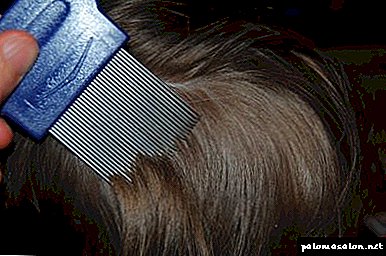 You can quickly and efficiently kill all lice and nits with the following tools:
You can quickly and efficiently kill all lice and nits with the following tools:
- special pharmaceutical preparations (Couple Plus, Nuda, etc.),
- table vinegar solution,
- kerosene solution (kerosene in its pure form is very toxic, it should be diluted with other ingredients),
- cemeric water
- tar soap,
- dust
- laundry soap,
- special anti-pedicular comb.
Hydrogen peroxide is not the best way to get rid of lice and nits. There is a high risk of side effects that can be deplorable for human health. It is necessary to think carefully before using this method.
After all, with a large number of various modern drugs, it is better to make a choice in favor of safety and health than saving money.
How effective is it?
 This method really works, and here's why: peroxide (a known antiseptic) damages the integument of an insect and burns out all its insides, because of which it dies.
This method really works, and here's why: peroxide (a known antiseptic) damages the integument of an insect and burns out all its insides, because of which it dies.
Even if the solution does not damage the outer tissues, it will penetrate the insect through the spiracle and do its work. Similarly, a solution of vinegar acts on lice.
And can the pharmaceutical preparation to remove the larvae and nits? The solution acts on the larvae, but weakly on the nits, since even after such an aggressive treatment the egg's shell is not damaged, but the secret by means of which the egg is attached to the hairs is damaged.
Thus, an antiseptic will help to wash off all nits, but for this, after the procedure it is necessary to comb the hair with a special comb.
How safe is it, is it worth trying?
Hydrogen peroxide against lice is difficult to call a safe method of treatment. By the way, doctors categorically do not recommend conducting such experiments, especially if you need to treat children.
And all because peroxide is an aggressive and unstable substance that can make a serious chemical burn.
But if you decided to try, despite the risks, then first carefully read the article and strictly follow the instructions. Even such an aggressive tool can be made safe, but for this you need to properly prepare it.
How to prepare an effective and skin safe solution?
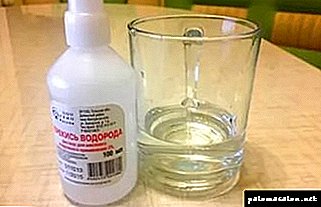 To prepare the working solution you need a pharmacy 3% solution. To make it safe for the skin, it must be diluted with water in a 50/50 ratio.
To prepare the working solution you need a pharmacy 3% solution. To make it safe for the skin, it must be diluted with water in a 50/50 ratio.
Thus, you get a 1.5 percent solution that can handle the head. This is the most reliable and safe recipe.
If you try to use undiluted solution, then, most likely, a chemical burn is provided to you. Dilute necessarily and do not regret water, otherwise the consequences will be several times worse than lice in the hair.
Rules of application of the solution
The prepared remedy should be used immediately, otherwise the antiseptic will change its structure and become useless. In general, this drug is very unstable, so keep it for a long time is not recommended.
Before the procedure, buy a fresh bottle and be sure to 3 percent. Do not use more concentrated pharmaceutical solutions, for example, 30 percent, which is sold in cans.
Before applying the product to your head, test yourself for an allergic reaction:
- apply a minimal amount of the product on the sensitive skin (behind the ear or on the elbow),
- wait 10-15 minutes
- look carefully at the skin, if it reddened, inflamed, began to itch, burn, swell, it means that you are allergic and the remedy did not suit you.
If you have no allergies, then you can apply the solution, and how to use this tool, read the next paragraph of the article. By the way, please note that even this amount of antiseptic can discolor hair, so for too long do not hold the product on your head.
We poison the parasites
- When dividing the hair into strands, carefully apply the solution with a washcloth on each strand and on the scalp. Try to do everything so that it does not flow, otherwise it will get into your eyes, which is especially dangerous (it may even provoke a complete loss of vision). Carry out the processing as quickly as possible so as not to overdo the product on the strands that you have processed first.
- Hold the product for 5-10 minutes and flush. Wash off with soap and water, you can rinse the hair with citric acid solution to neutralize the effect of antiseptic.
- Dab your head with a towel and carefully comb each strand with a special comb. Comb from such parasites has thick thin teeth, it is often metallic and compact, making it convenient to use.
Do not hold the solution on your head for more than 10 minutes, otherwise you can completely discolor hair! By the way, dyeing hair in bright colors also has a detrimental effect on parasites, so some women prefer to combine business with pleasure: remove lice and dye their hair at the same time.
Doctors do not advise to combine these procedures, as the scalp will get a lot of stress and the result can be unpredictable. It is better to first get rid of the problem, and then change the hair color.
Testimonials: What do people say about a folk remedy?
Judging by the reviews, some of the above described method of dealing with parasites is very pleasant, others get a negative result and remain dissatisfied (approximately 50/50).
Often people complain of chemical burns after improper use of the pharmacy solution. If you have already tried and have something to say, then leave your feedback on this site.
Well, that's all, dear readers. If it was interesting for you to read, then subscribe to our updates and share the read on social networks with friends. Visit us more often as new interesting articles are published every day. Good luck to you! Bye everyone!
Author of the article: Anna Derbeneva (dermatologist)
Properties and formula of hydrogen peroxide
In 1818, a substance was experimentally discovered with the formula H2O2. Already in 1973 began mass production and detailed study of this compound. Peroxide has been recognized as environmentally friendly, since, in contact with the liquid, it splits into molecules of oxygen and water.
In medical practice, it is customary to use 3% peroxide. It disinfects and cleans skin lesions, abrasions and wounds.

The disinfecting effect is achieved due to the fact that hydrogen peroxide, acting in the skin cells, releases oxygen, and the resulting foam mechanically cleans the wound, pulls pus and microbes.
Effects of hydrogen peroxide on insects
It may seem that the disinfectant will be ineffective in the fight against head lice, but, in fact, Hydrogen peroxide is a strong oxidizing agent that literally eats away lice.. This way you can overcome most of the insects.
With this method, of course, persistent individuals may remain, and some will have minor damage, but, in any case, the parasite will not be able to lead an active lifestyle. Reproduction becomes impossible. The most viable insects continue their parasitic activity. The method is as effective as all the recommendations for hydrogen peroxide treatment will be followed.
The compound cannot hit the shell of the nits, but the active components of the peroxide destroy mucus, by means of which the eggs of insects are held on human hair.

Contraindications to use
Before applying peroxide, you need to check the sensitivity of the skin to the compound. To do this, a few drops of peroxide should be applied to the skin behind the ear or on the elbow bend. If a burning sensation occurs, any rash or redness appears, hydrogen peroxide from nits and lice is prohibited. It is also not recommended to remove lice with hydrogen peroxide in children younger than 5 years, as the reaction of delicate baby skin can be unpredictable.
The list of main contraindications to the use of the product includes:
- individual intolerance,
- the presence of skin lesions on the head,
- age less than 5 years.
Hydrogen peroxide affects the hair pigment and highlights it, and also weakens the hair structure. After the procedure, the curls can lighten by 1-2 tones, and their treatment will be required.
The preparation of the composition for treatment
To remove lice, hydrogen peroxide is used exclusively in a diluted form, otherwise you can get a skin burn. It can also cause brittle hair and cross-section.
In order to prepare the composition against lice, you need to dilute the hydrogen peroxide with water in a ratio of 1 to 2. The concentration of the substance will be lower by 1.5%. It is necessary to prepare the tool immediately before use, otherwise, during prolonged contact with oxygen, it will lose its properties.
The effectiveness of the method of struggle
Hydrogen peroxide against lice copes with its task after the first treatment at home. Especially effective method with minor infections and short hair. The decisive stage of the whole procedure is combing. It is recommended to produce at least half an hour. It is necessary to comb the hair from lice for three days.
After each combing it is necessary to check the curls for the presence of lice and nits. This is done using a magnifying glass and in daylight.

Repeated processing procedure is necessary only in some cases. These include:
- severe infection
- detection of live lice a few days after the first treatment,
- the presence of louse bites,
- long hair length.
Hydrogen peroxide from lice in the second and subsequent times can be used only 10 days after the first use. A break is needed due to the fact that frequent use of the agent acts aggressively on the hair, oxidizes it and damages the structure. In order for lice to form from nits you need at least 14 days, so re-processing is done only after this time.
When you find fresh bites need to carefully comb out the curls. Surviving lice can be removed mechanically and after 2 weeks, repeat the treatment procedure again.
Prevention of adverse reactions
During the treatment, it is normal to feel a slight burning sensation on the scalp.
In order to avoid burns you need to adhere to some safety rules:
- when enhancing discomfort, rinse off the drug should be immediately, without waiting for the recommended 10 - 20 minutes,
- it is not necessary to process the hair and scalp without a test for individual intolerance, and it does not matter that peroxide could have been used by a person before and at the same time it did not cause any negative effects
- it is strictly forbidden to keep the composition from lice on the head for more than 20 minutes,
- you cannot ignore any damage on the scalp,
Hydrogen peroxide acts on the lice very effectively, it affects almost everyone. With the inept use of the recipe, it can harm a person, but if you follow all the rules and recommendations, you can achieve the desired effect. This folk remedy is affordable and very easy to use. Each person decides for himself whether he should use this method or it is better to buy a professional shampoo against pediculosis. By the way, along with hydrogen peroxide, ordinary hair dye also helps against lice.
Vidal: https://www.vidal.ru/drugs/hydrogen_peroxide__36359
GRLS: https://grls.rosminzdrav.ru/Grls_View_v2.aspx?routingGuid=598c3f69-91b2-45a1-8970-19bdc77500f8&t=
Found a mistake? Select it and press Ctrl + Enter
Instructions for use
Hydrogen peroxide is quite a powerful oxidizing agent, and cannot be used in its pure form. For the treatment of hair and scalp, a solution of 3% peroxide with water in a 1: 1 ratio is used; a solution with a content of 1.5% hydrogen peroxide is obtained. Apply the solution immediately after preparation, otherwise it will lose quality.
Before starting the procedure you need to prepare all the necessary accessories:
- glass or enameled container for dilution of hydrogen peroxide,
- sponge for applying the composition,
- latex gloves
- acidified water for rinsing hair
- comb with frequent teeth for combing and white fabric.
Step-by-step instructions for applying a solution of hydrogen peroxide against lice and nits:
- First you need to carefully comb your hair. Wear medical latex gloves to protect your hands. The solution is applied with a sponge to the individual strands of hair alternately. To process hair on all length, from roots to tips. After all the hair has been treated, apply the solution to the scalp. All manipulations try to do as quickly as possible, avoiding contact with the solution on the face, especially on the eyes and nose. To prevent the drug from evaporating, put a plastic bag or a shower cap on your head.
- The time of the procedure from 6 to 15 minutes. Perhaps a slight burning sensation, but if the pain is felt there is an urgent need to immediately flush the solution.
- Rinse hair thoroughly with warm water. The second time to rinse the hair with acidified solution - warm water with a spoonful of vinegar and citric acid. Due to this, most of the dead lice and nits, easily washed out of the hair.
- Dry hair and comb each strand well with a special comb or just a comb with frequent, dense teeth. The purpose of this stage is to comb out all the dead individuals and, most importantly, remove all nits from the hair. After 14 days of nits will grow a full-fledged louse, and infection can begin anew. therefore combing is a very important point, you need to spend it at least half an hour, and repeat another 2 days after treatment. Carry out the procedure in daylight, laying a white cloth to evaluate the results of the work.
On our site you will find an overview of the best crests of lice, constant assistants in the fight against parasites.
Precautionary measures
 Since peroxide is the strongest oxidizing agent, do not forget on safety measures for external use of the drug:
Since peroxide is the strongest oxidizing agent, do not forget on safety measures for external use of the drug:
- Before starting treatment, a sensitivity test is required - a few drops of the drug should be applied to the elbow bend and the area behind the ear. If there is no strong burning sensation and other painful sensations, then the procedure can be started,
- if you feel an unbearable burning solution, you need to wash it off immediately,
- If necessary, it is possible to repeat the treatment only after 2 weeks - that is how long it takes for a randomly missed nit to grow into a full-fledged individual. Also, this period is necessary for hair and scalp to recover from exposure to an oxidant,
- It is forbidden to increase the time of the procedure. The maximum time of action of a solution of hydrogen peroxide is 15 minutes. Even if there are no discomfort, after the specified time you need to wash the hair.
Attention! If you comply with all safety measures, you can get rid of lice in one procedure without pain.
Side effects
 With all safety measures using peroxide, you can quickly and accurately get rid of lice and nits in a short time. Side effects usually occur while neglecting precautions.
With all safety measures using peroxide, you can quickly and accurately get rid of lice and nits in a short time. Side effects usually occur while neglecting precautions.
Side effects when using a solution of hydrogen peroxide against lice:
- 1-2 tones hair lightening,
- dry scalp and hair,
- hair loss and cross section
- burns behind the ears, on the neck and rarely on the scalp,
- allergic reactions, redness, itching, flaking of the scalp.
Drug price
In pharmacies in Russia you can find only 3% hydrogen peroxide. To prepare a solution for topical application against lice and nits, the preparation is diluted with water in a ratio of 1: 1. For treatment of medium-length hair, a maximum of 200 ml of solution is required. That is, one application requires a 100 ml peroxide vial. The average price in pharmacies in Russia hydrogen peroxide 3% 100 ml is 12 rubles.
Hydrogen peroxide is highly effective in the fight against head lice. And, most often, complete disposal of lice and nits occurs in one application. But in rare cases with abundant hairiness or with long, thick hair, additional treatment is required after 14 days. When peroxide is used again, it also requires 1 bottle with a capacity of 100 ml, costing an average of 12 rubles.
The cost of a full course of treatment of pediculosis with a solution of hydrogen peroxide is from 12 to 24 rubles.
Advantages and disadvantages
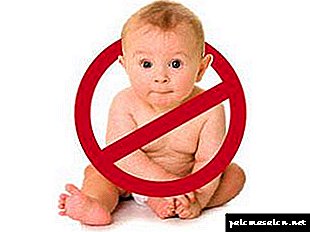 Benefits:
Benefits:
- Peroxide has a low price, which is its main advantage.
- Hydrogen peroxide is always in any pharmacy in every city.
- Most often, a positive result is already after the first application.
- The drug does not contain toxic substances, all components are biodegradable.
Disadvantages:
- Age restrictions. Peroxide should not be used for children under 5 years old, with caution for children under 14 years old. But it is the children most often prone to lice.
- Aggressive effect on the scalp and hair. This drug is still an oxidizing agent, so even with all the precautions, it dries hair and scalp. Therefore, recovery from vitality with the help of nourishing masks is required.
- Probably a slight brightening of the hair.
- In rare cases, burns, hair loss, allergic reactions.
Hydrogen peroxide is an affordable and effective tool in the fight against lice and nits. But before using the drug it is important to observe all precautions, be sure to familiarize yourself with possible side effects.
Useful videos
Treatment of pediculosis folk remedies.
How to get rid of lice and nits at home?







 You can apply only diluted to 1.5% concentration solution. To get it, add exactly the same amount of water to hydrogen peroxide.
You can apply only diluted to 1.5% concentration solution. To get it, add exactly the same amount of water to hydrogen peroxide. Then hair rinsed with water with lemon juice or a tablespoon of vinegar added to itto neutralize the remnants of soap.
Then hair rinsed with water with lemon juice or a tablespoon of vinegar added to itto neutralize the remnants of soap.